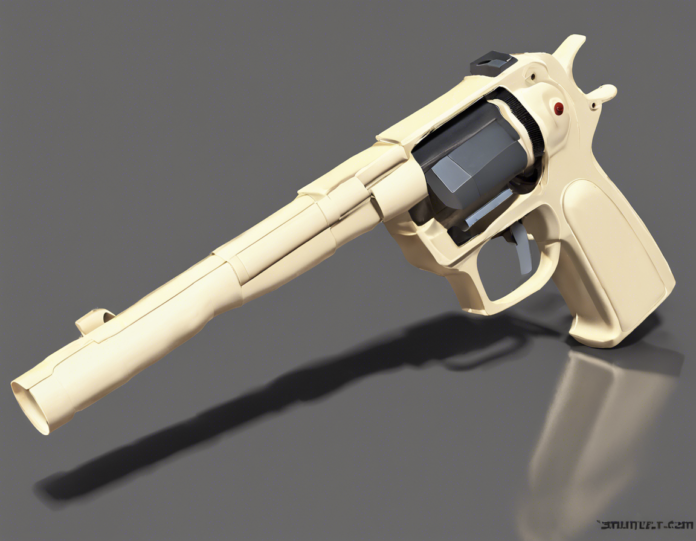Introduction
The concept of crafting your own firearm can be both intriguing and intimidating. A DIY gun project can provide a sense of accomplishment and customization, but it also requires expertise, caution, and knowledge of the laws surrounding firearms. This comprehensive guide will walk you through the steps of crafting your own gun, highlighting important aspects such as legal considerations, necessary tools and materials, different types of firearms you can craft, and safety precautions to keep in mind throughout the process.
Understanding the Legalities
Before embarking on a DIY gun project, it is crucial to understand the legalities involved. In the United States, the Gun Control Act and National Firearms Act regulate the manufacturing and ownership of firearms. Under these laws, it is illegal to manufacture a firearm for sale or distribution without a license. However, individuals are allowed to craft their own firearms for personal use without a license, provided that the gun is not for sale and does not violate any state or federal laws.
It is essential to research and comply with federal, state, and local laws regarding firearm ownership and manufacturing in your area. Failure to do so can result in serious legal consequences.
Types of DIY Firearms
There are various types of firearms that can be crafted at home, each requiring different levels of skill and expertise. Some popular options include:
-
Pistol: Building a pistol from scratch involves assembling components such as the frame, slide, barrel, and trigger mechanism. Kits are available for those looking to customize their pistol with specific features.
-
Rifle: Crafting a rifle typically involves more complex components, including the stock, barrel, bolt carrier group, and trigger assembly. Kits are available for different rifle platforms, such as AR-15 or AK-47 variants.
-
Shotgun: Building a shotgun requires assembling parts such as the receiver, barrel, magazine tube, and stock. Shotgun kits are available for those interested in customizing their own firearm.
Tools and Materials
To build your own firearm, you will need a set of tools and materials suited to the type of gun you plan to craft. Some common tools and materials include:
- Workbench: A sturdy workbench will provide a stable surface for assembling your firearm.
- Vise: A vise will help secure parts during assembly and allow for more precision.
- Punches and Hammers: These tools are essential for driving out pins and securing components.
- Gunsmithing Tools: Specialized tools such as armorers wrenches, barrel vise blocks, and sight pushers may be needed for specific tasks.
- Parts Kit: Depending on the type of firearm you are building, you will need a parts kit that includes all the necessary components.
- Safety Equipment: Safety glasses, gloves, and hearing protection are essential when working with tools and machinery.
The Build Process
The process of building your own firearm can be broken down into several key steps:
-
Research and Planning: Before starting your build, research the specific firearm you want to craft and familiarize yourself with its components and assembly process. Create a detailed plan outlining each step of the build.
-
Acquire Parts and Tools: Once you have a plan in place, acquire the necessary parts kit, tools, and materials. Ensure that you have everything you need before starting the build.
-
Assembly: Follow the manufacturer’s instructions or online guides to assemble your firearm. Take your time during this step to ensure that each component is properly fitted and secured.
-
Testing: Once the firearm is assembled, perform function tests to ensure that all parts are working correctly. Test the firearm in a safe and controlled environment.
-
Finishing: Depending on your preferences, you may choose to finish your firearm with a coat of paint, cerakote, or other protective finishes.
Safety Precautions
Building a firearm at home presents unique safety challenges. To ensure your safety and the safety of those around you, follow these precautions:
- Work in a Well-Ventilated Area: Fumes from solvents and finishes can be harmful if inhaled. Work in a well-ventilated area or wear a respirator when necessary.
- Use Proper Safety Gear: Wear safety glasses to protect your eyes from debris and chemicals. Gloves can prevent injuries when handling sharp parts.
- Double-Check Components: Before assembling or testing your firearm, double-check that all components are installed correctly and secure.
- Keep Work Area Clean: A cluttered work area can lead to accidents. Keep your workbench organized and free of clutter.
- Store Tools Safely: When not in use, store your tools and materials in a secure location to prevent accidents or unauthorized access.
Frequently Asked Questions (FAQs)
- Is it legal to build your own firearm?
-
In the United States, it is legal to build your own firearm for personal use without a license, as long as it complies with federal and state laws.
-
Do I need a background check to build my own firearm?
-
No background check is required to build your own firearm for personal use. However, purchasing a firearm from a licensed dealer requires a background check.
-
Can I sell a firearm that I have built myself?
-
It is illegal to sell a firearm that you have built yourself without a license. Firearms can only be sold by licensed dealers.
-
Do I need special tools to build a firearm?
-
While specialized gunsmithing tools can make the process easier, basic tools such as punches, hammers, and vise grips are sufficient for most DIY firearm builds.
-
Are there restrictions on the type of firearm I can build at home?
-
Federal law prohibits the manufacture of certain firearms, such as fully automatic weapons or short-barreled rifles, without the appropriate licenses and permits.
-
Do I need to register a firearm that I have built myself?
-
In most states, there is no requirement to register a firearm that you have built for personal use. However, it is essential to research and follow the laws in your state.
-
Is it safe to shoot a firearm that I have built at home?
-
Yes, as long as the firearm has been properly assembled and tested for safety. It is crucial to follow all safety precautions and laws when using a DIY firearm.
-
Where can I find resources for building my own firearm?
-
Online forums, gunsmithing websites, and instructional videos are valuable resources for individuals interested in building their own firearms.
-
Can I customize the appearance and features of a firearm that I build myself?
-
Yes, building your own firearm allows for customization of features such as grips, sights, stocks, and finishes to suit your preferences.
-
What are the benefits of building a firearm at home?
- Building your own firearm allows for customization, learning about firearm mechanics, and a sense of accomplishment. It can also be a cost-effective option compared to purchasing a factory-made firearm.
In conclusion, crafting your own firearm can be a rewarding and educational experience, but it requires careful planning, adherence to laws and regulations, and a strong emphasis on safety. By following the steps outlined in this guide and staying informed about legal requirements and safety practices, you can successfully build your own firearm and enjoy the process of creating a personalized and functional weapon. Remember to always prioritize safety and responsible ownership when working on DIY gun projects.

